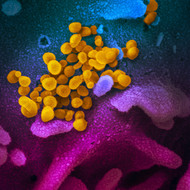COVID-19 Under the Microscope
Mar 30th 2020
Novel Coronavirus SARS-CoV-2 Under the Microscope
The National Institute of Allergy and Infectious Diseases Rocky Mountain Laboratories (NIAID-RML), located in Hamilton, Montana was able to capture images of the novel coronavirus (SARS-CoV-2, previously known as 2019-nCoV) on its scanning electron microscope and transmission electron microscopes. SARS-CoV-2 causes COVID-19 disease which has resulted in a global pandemic.
This scanning electron microscope image shows SARS-CoV-2 emerging (the round gold objects) from the surface of cells cultured in a lab. SARS-CoV-2 is the virus that causes COVID-19. The virus shown was isolated from a patient in the United States. Credit: NIAID-RML.
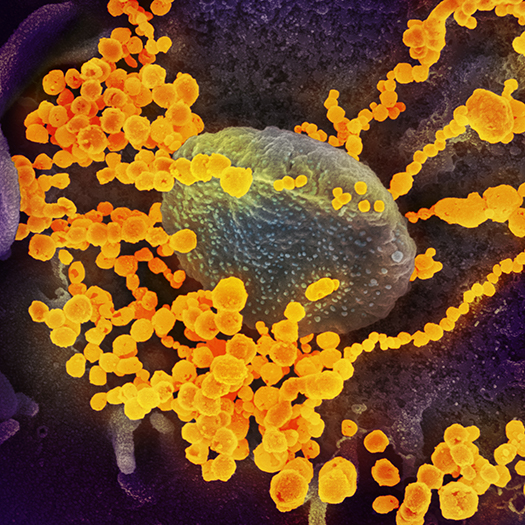
This is a micrograph of SARS-CoV-2 virus particles that were isolated from a patient. The image was captured under a transmission electron microscope and color-enhanced at the NIAID Integrated Research Facility (IRF) in Fort Detrick, Maryland.
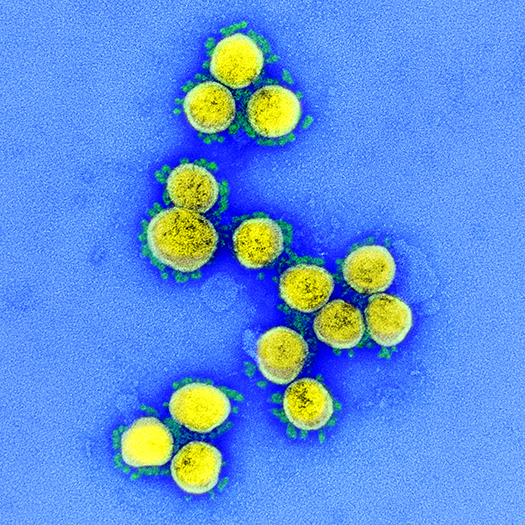
This is a transmission electron micrograph of SARS-CoV-2 virus particles, isolated from a patient. The image was captured using a transmission electron microscope and color-enhanced at the NIAID Integrated Research Facility (IRF) in Fort Detrick, Maryland.
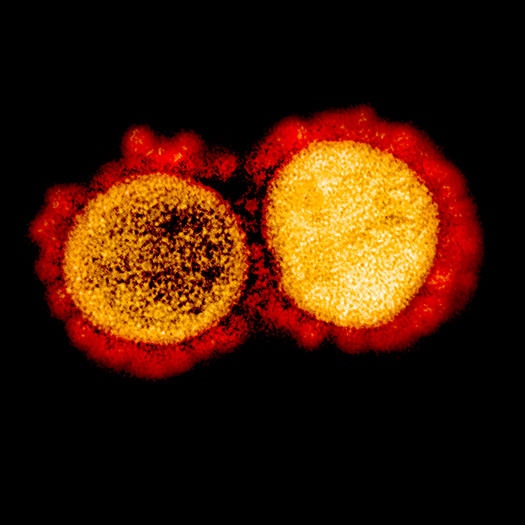
This image captured with a scanning electron microscope shows SARS-CoV-2 (the round magenta objects) emerging from the surface of cells cultured in the lab. SARS-CoV-2 is the virus that causes COVID-19. The virus shown was isolated from a patient in the United States. Credit: NIAID-RML.
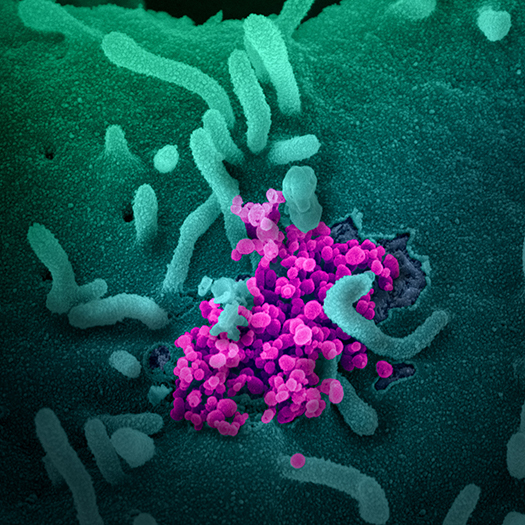
This transmission electron microscope image shows SARS-CoV-2, the virus that causes COVID-19 isolated from a patient in the United States. Virus particles are shown emerging from the surface of cells cultured in the lab. The spikes on the outer edge of the virus particles give coronaviruses their name, crown-like. Credit: NIAID-RML.
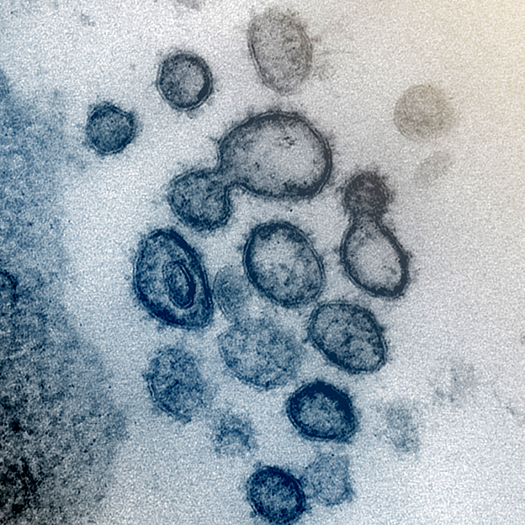
This scanning electron microscope image shows SARS-CoV-2 (in yellow), the virus that causes COVID-19 isolated from a patient in the United States, emerging from the surface of cells (blue and pink) cultured in the lab. Credit: NIAID-RML.
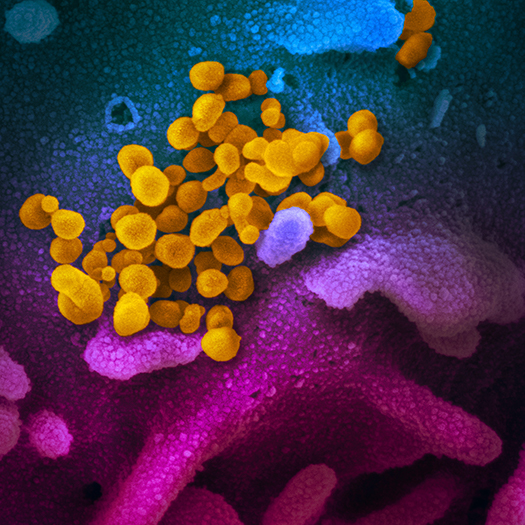
A transmission electron microscope was used to capture SARS-CoV-2 virus particles isolated from a patient. The image was captured and color-enhanced at the NIAID Integrated Research Facility (IRF) in Fort Detrick, Maryland.
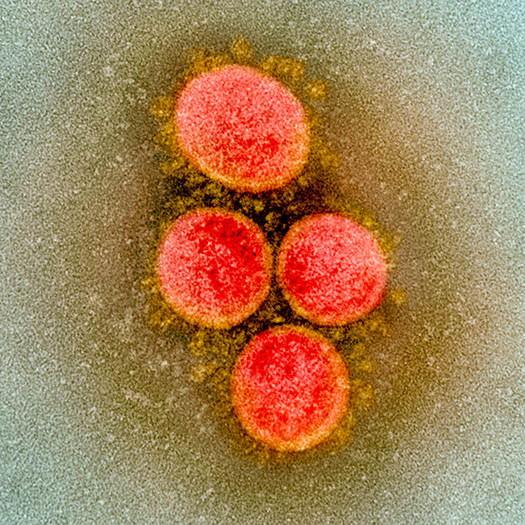
This scanning electron microscope image shows SARS-CoV-2 (in yellow), also known as 2019-nCoV, the virus that causes COVID-19 isolated from a patient in the United States, emerging from the surface of cells (pink) cultured in the lab. Credit: NIAID-RML.
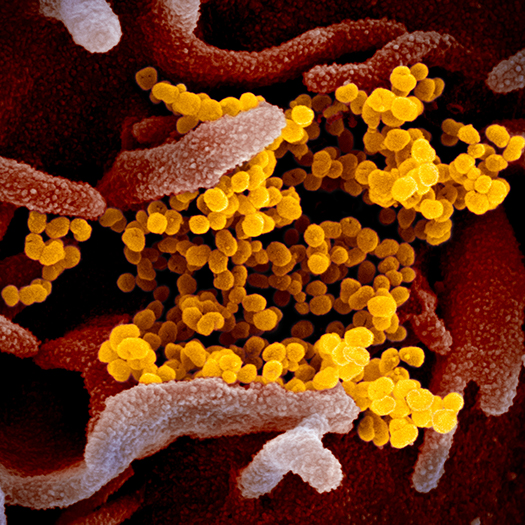
This is a transmission electron micrograph of SARS-CoV-2 virus particles, isolated from a patient. The image was captured and color-enhanced at the NIAID Integrated Research Facility (IRF) in Fort Detrick, Maryland.
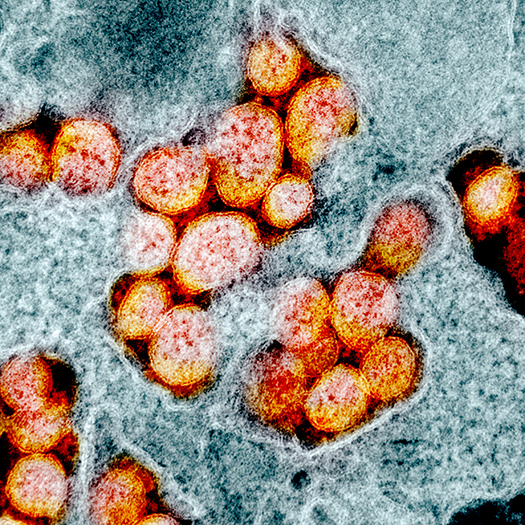
This scanning electron microscope image shows SARS-CoV-2 (the round blue objects) emerging from the surface of cells cultured in the lab. SARS-CoV-2 is the virus that causes COVID-19. The virus shown was isolated from a patient in the United States. Credit: NIAID-RML.
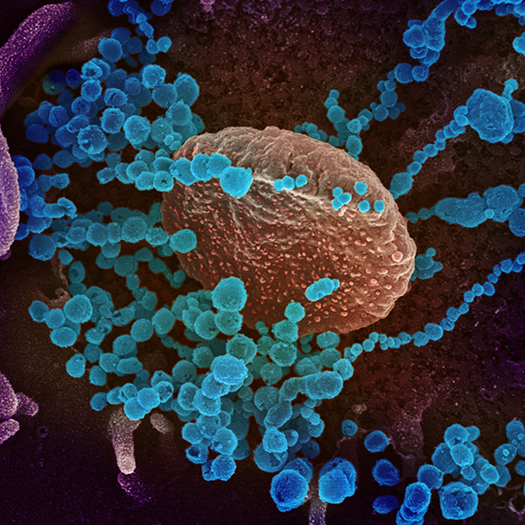
This transmission electron microscope image shows SARS-CoV-2, the virus that causes COVID-19 isolated from a patient in the United States. Virus particles are shown emerging from the surface of cells cultured in the lab. The spikes on the outer edge of the virus particles give coronaviruses their name, crown-like. Credit: NIAID-RML.
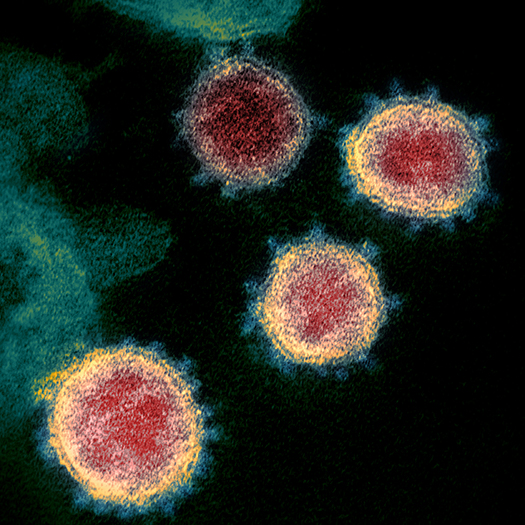
This scanning electron microscope image shows SARS-CoV-2 (in orange), the virus that causes COVID-19 isolated from a patient in the United States emerging from the surface of cells (green) cultured in the lab. Credit: NIAID-RML.
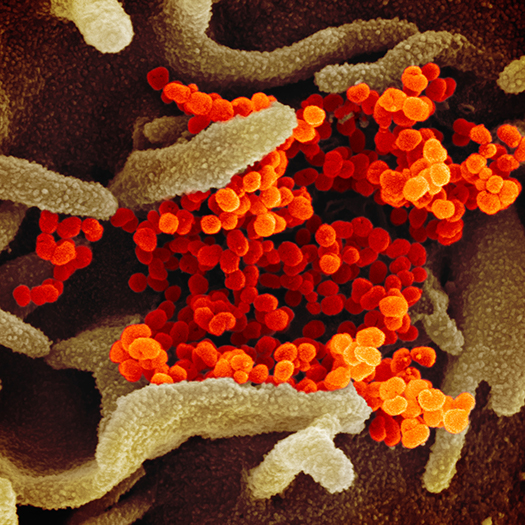
How Can I View COVID-19 Under the Microscope?
The novel Coronavirus (SARS-CoV-2) causes COVID-19 disease and can be viewed under a scanning electron microscope or a transmission electron microscope. Viruses can not be viewed under standard light compound microscopes.
What is a Scanning Electron Microscope?
A scanning electron microscope (SEM) scans a sample with a focused electron beam and acquires images with information about the samples' topography and composition. Scanning Electron Microscopes are widely used in nanotechnology, materials research, life sciences, semiconductor, raw materials and industry.
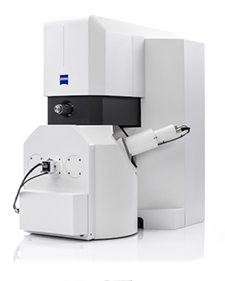
What is a Transmission Electron Microscope?
A transmission electron microscope (TEM) uses beams of electrons transmitted through a specimen to form an image. The specimen is usually an ultra-thin section less than 100nm thick. The image is magnified and focused onto an imaging device such as a layer of photographic film.
Transmission electron microscopes are capable of imaging at a significantly higher resolution than light microscopes, due to the smaller de Broglie wavelength of electrons. This allows the TEM to capture fine detail, even as small as a single column of atoms, which is thousands of times smaller than a resolvable object seen in a light microscope.
Transmission Electron Microscopes are used in cancer research, virology, materials science, nanotechnology, paleontology, and semiconductor research.
Microscope Questions?
If you have any questions regarding scanning electron microscopes, transmission electron microscopes, or simple light microscopes contact Microscope World and we will be happy to help.

